How many of these retro food trends can you remember?
Dishes of the day
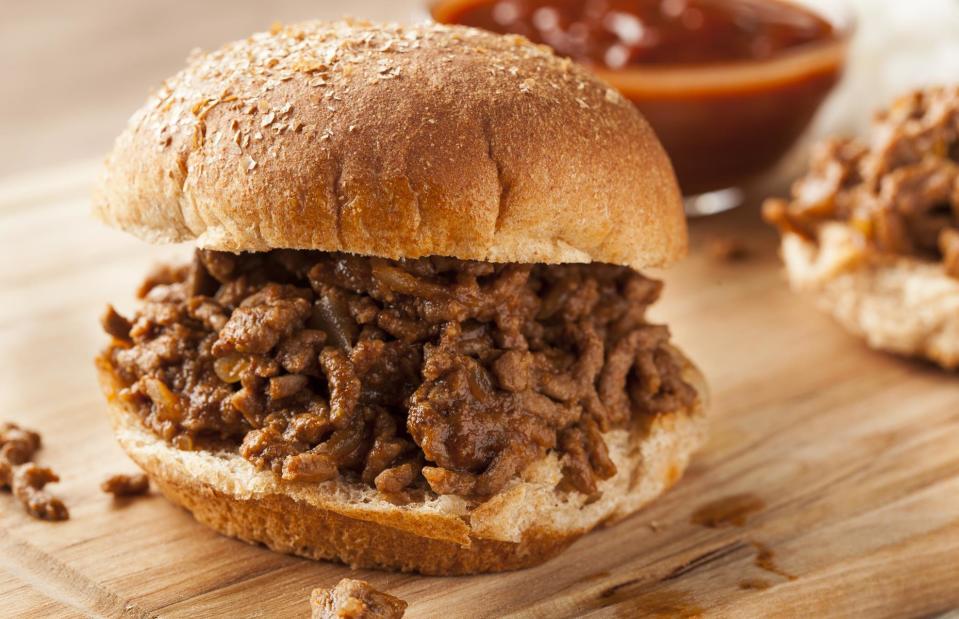
Brent Hofacker/Shutterstock
Food fashions come and go and nothing highlights this more than digging up old recipes. Some years we ate the foods that were in abundance and readily available, others we ate what would have been considered trendy at the time. So from hoover stew to Key lime pie, these were the most popular dishes of their decade.
1900s: chicken pudding
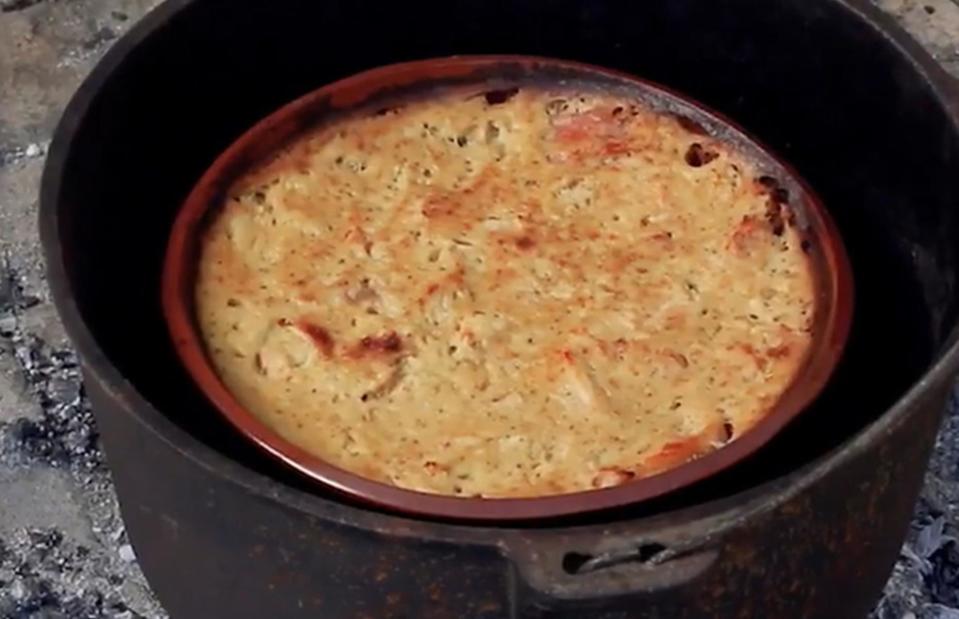
mount_vernon/Instagram
Particularly loved in Virginia, a savoury recipe called chicken pudding was popular at the start of the 20th century. Imagine the textures of quiche and cake combined and it’s similar to this dish of chicken pieces baked in batter with herbs. Imagine it covered in gravy and it still sounds strangely appetising.
1900s: ambrosia
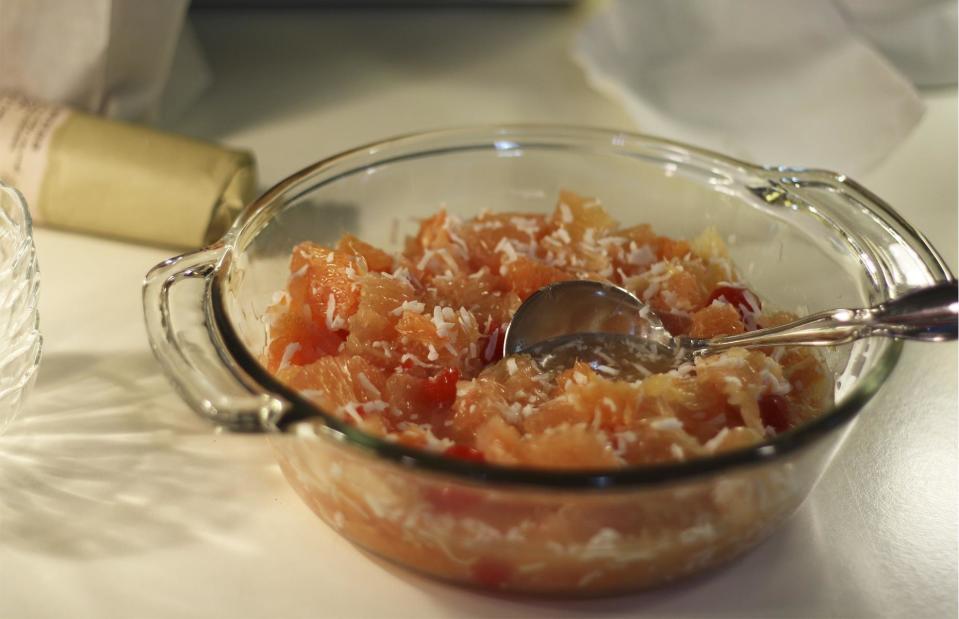
T. Cowart/Flickr/CC BY 2.0
In the early 20th century ambrosia was nothing like the white, fluffy, fruit salad-dessert hybrid we see at dinner parties today. It was light and refreshing, simply orange slices and coconut layered in a dish with sugar. However, over the years in the US, Southern cooks have taken the recipe and given it their individual family twist which is how ingredients such as maraschino cherries, nuts, raisins, Cool Whip, whipped cream, yogurt and marshmallows crept into it.
1910s: oyster loaf

Brent Hofacker/Shutterstock
In the late 1800s Americans became very good at harvesting oysters and by 1910 they cost half as much as beef. Eaten by rich and poor, they were used to bulk out meat dishes or served with alcohol, just like burgers and fries are today. In this decade many iconic oyster restaurants opened such as New York’s Grand Central Oyster Bar, Casamento’s in New Orleans and Swan Oyster Depot in San Francisco. A particularly popular way to eat them was fried in white bread with lemon and hot sauce.
1910s: vichyssoise
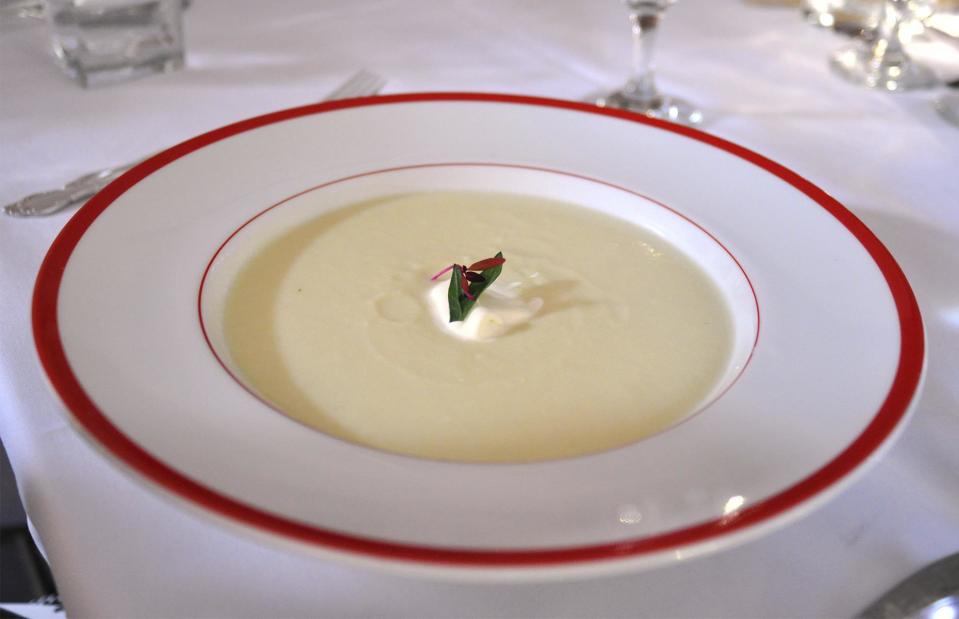
Mark H. Anbinder/Flickr/CC BY-NC-SA 2.0
Invented in 1917 at the Ritz-Carlton Hotel in New York, this elegant soup was a hit with customers. French chef Louis Diat got the idea from the hot leek and potato soup his mother made him which he cooled with milk in summer. Served chilled and as an appetiser, it’s made with puréed onions, leeks, potatoes, chicken broth and cream. Soon other restaurants imitated it and, a testament to its popularity, it still lives on today.
1910s: applesauce cake

AnjelikaGr/Shutterstock
During the First World War, when home cooks wanted something tasty they made applesauce cake. Recipes for it started appearing in cookbooks in the 1910s, and it was popular because it used very little sugar, fat and flour – all rationed ingredients. Sweet, moist and spiced with cinnamon, ginger, cloves and vanilla, it’s still delicious today. There's even a day named after it (on 6 June).
1920s: clam chowder
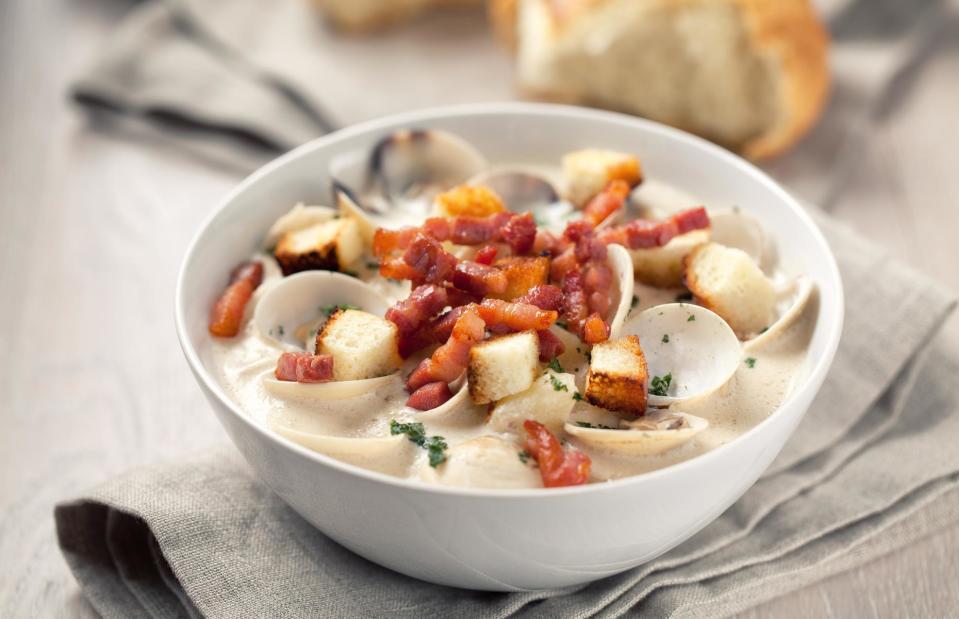
svariophoto/Shutterstock
Recipe books in the 1920s were rife with recipes for clam chowder. New England’s version is thick and rich with bacon and cream and sometimes potatoes and onions are thrown in too. Its Manhattan counterpart skips the cream and offers a tomato base instead. Want to taste this blast from the past? Head to Aunt Carrie’s in Rhode Island, opened in 1920 and is said to serve the best clams in the state.
1920s: chicken à la king
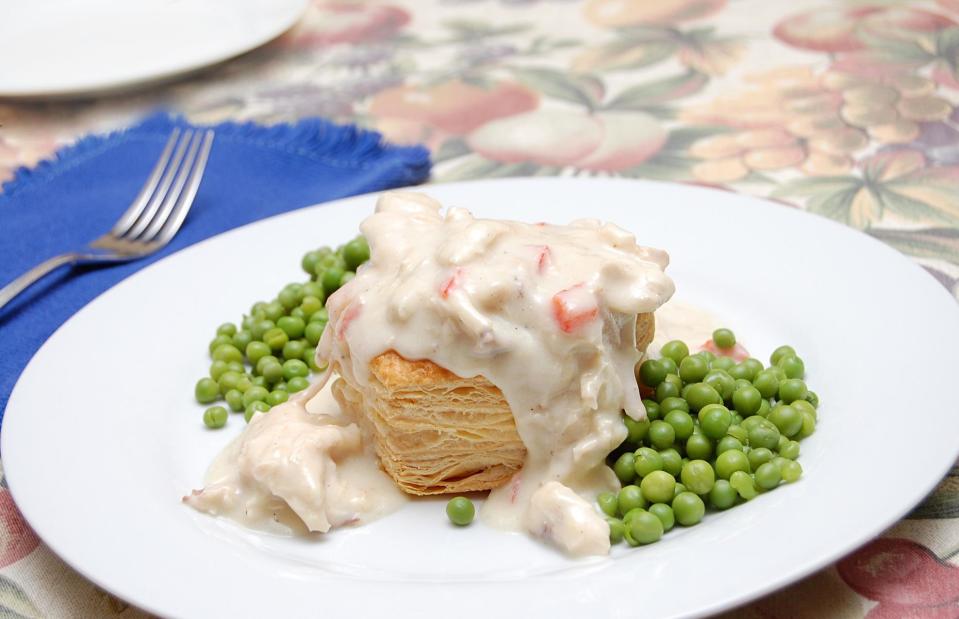
Tanis Saucier/Shutterstock
Although the Roaring Twenties were about opulence, the average household wasn’t quaffing Champagne but eating chicken à la king for dinner. Comfort food at its finest, the dish consists of mushrooms, peppers, diced chicken and creamy sauce served over rice or toasted bread. Thought to have been invented around this time, it’s popularity continued for the duration of the century.
1920s: scalloped potatoes
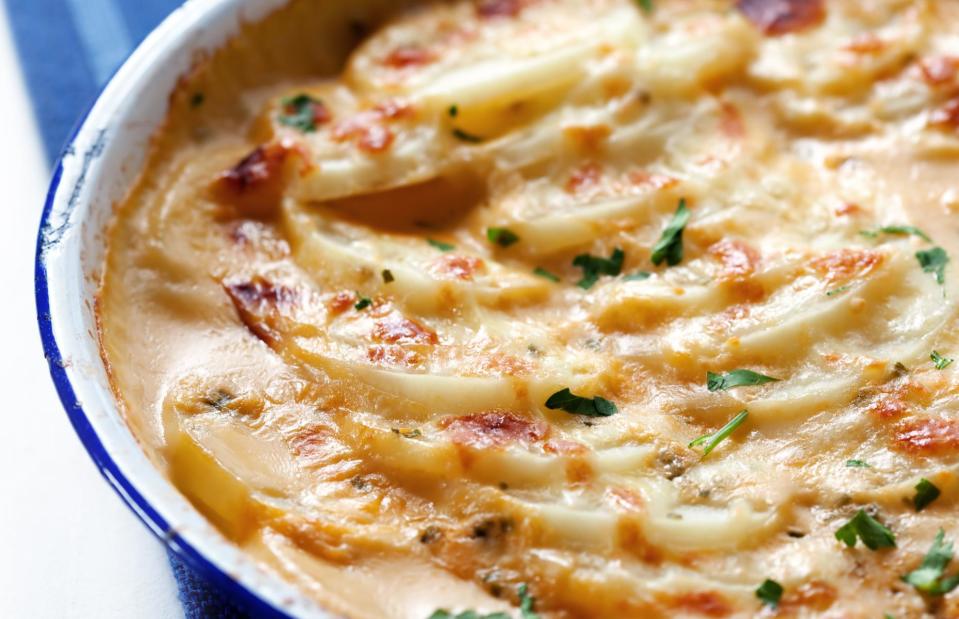
Robyn Mackenzie/Shutterstock
Still eaten today, scalloped potatoes was the prolific side dish of the 1920s. Dairy was no longer rationed and the rich casserole, also known as potatoes gratin, took full advantage of this. Sliced potatoes were layered and baked with lashings of cream, milk and cheese and would accompany something like baked ham.
1930s: creamed chipped beef

MSPhotographic/Shutterstock
When the Great Depression hit in the 1930s, households returned to slim pickings. Creamed chipped beef over toast was a common dish. For those too young to remember, chipped beef is pressed, salted and fried beef that’s sliced into small pieces and rehydrated in white sauce. It was also eaten by the United States Armed Forces.
1930s: egg drop soup
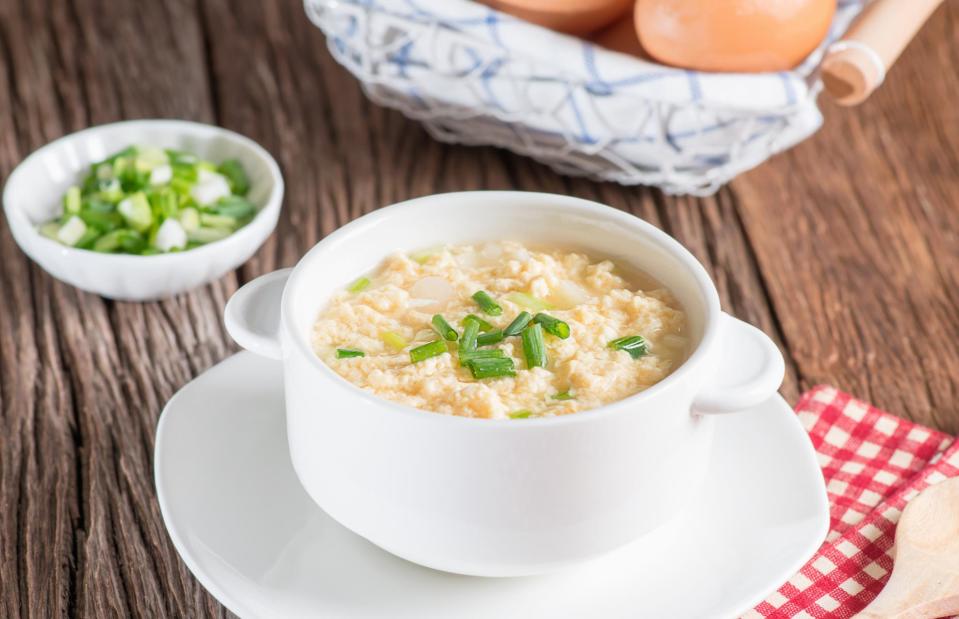
inewsfoto/Shutterstock
Although egg drop soup is a Chinese recipe, during the Great Depression an American version containing potatoes and onions – central ingredients in most depression dishes – was popular. It was a light vegetable broth with filling veggie chunks and egg and cheese scrambled in for protein. It was eaten with toast.
1930s: hoover stew
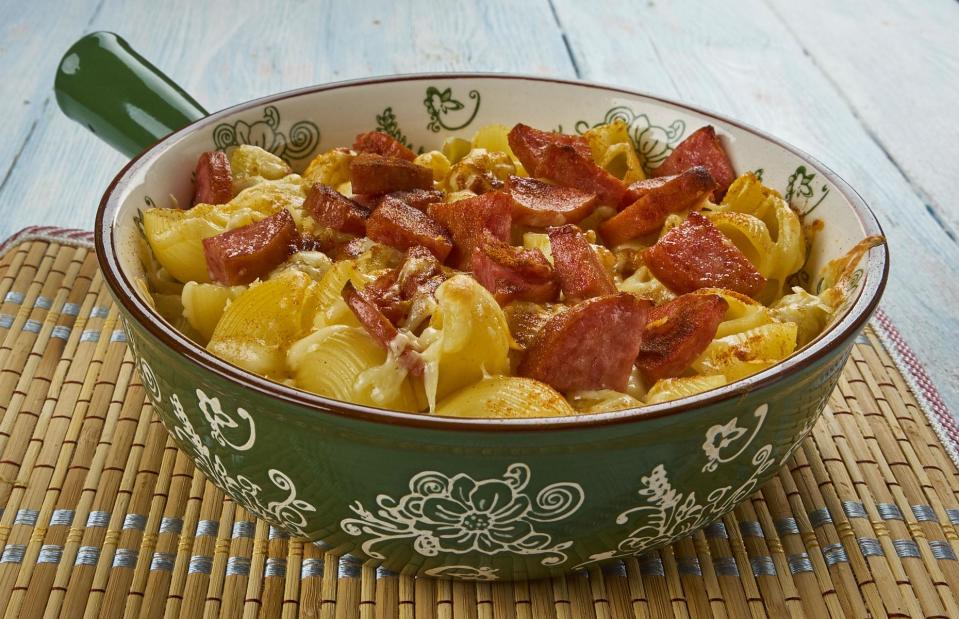
Fanfo/Shutterstock
With a name like hoover (or Hooverville) stew, you just know the dish is going to be abominable. But at a time when people didn’t have much money, macaroni, canned tomatoes and chopped hot dogs were a good option. Named after Hoovervilles, shanty towns built during the Great Depression, the recipe helped families make meat go further.
1940s: meat and potato patties
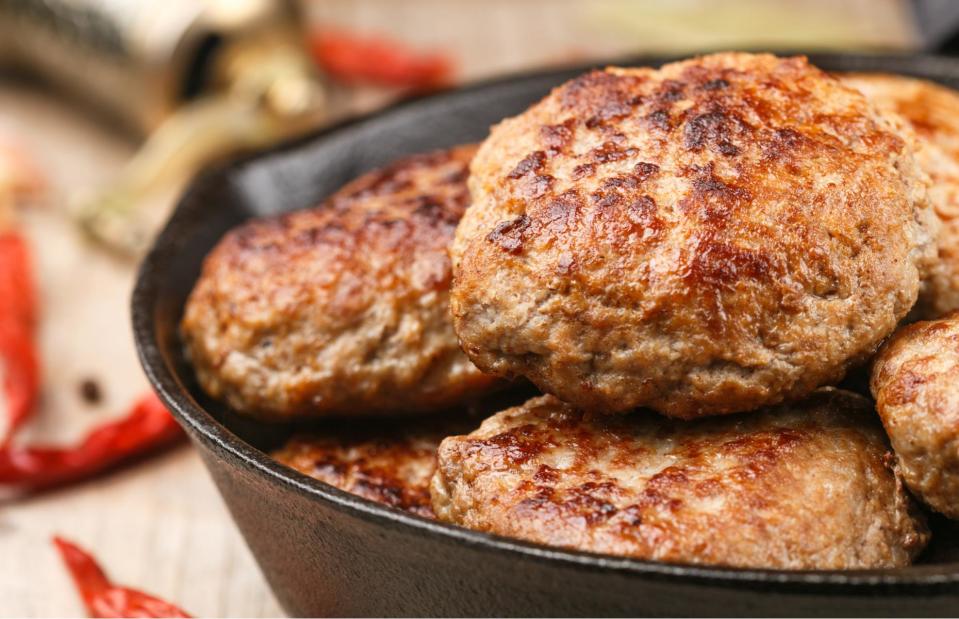
Viktory Panchenko/Shutterstock
Another major event which affected what Americans ate was the Second World War. The rationing of meat meant beef was often combined with potato to make it go further. Meat and potato patties are still tasty and a great alternative to 100% beef hamburgers if you’re trying to cut down on meat or use leftover beef mince.
1940s: key lime pie

AnjelikaGr/Shutterstock
Named after the tart and aromatic Florida Keys limes, key lime pie was a popular dessert in this decade. The delicious sweet treat has a cracker crust, filling of lime juice, sweetened condensed milk and egg yolks, and is topped with meringue or whipped cream. Who invented it is hotly debated, but to whoever they are we are grateful, as without them this modern passion fruit key lime pie recipe would not exist.
1940s: chiffon cake
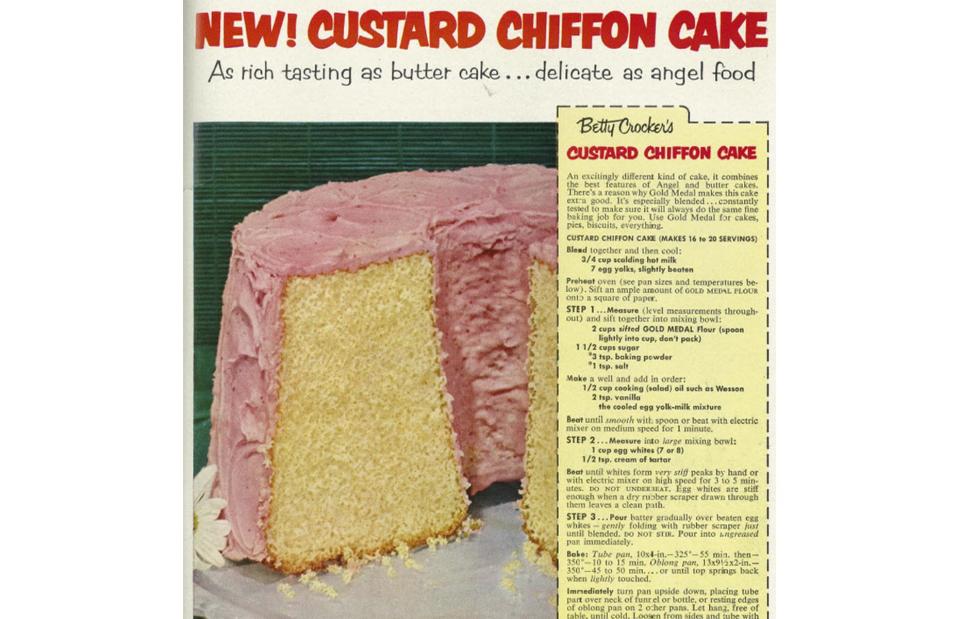
Classic Film/Flickr/CC BY-NC 2.0
A tall, beautiful, light, moist cake. It was invented by a Californian but sold to General Mills in 1947. Advertised as “the first really new cake in 100 years”, it uses oil instead of butter which gives it a super-soft texture. It’s baked in a cake tin with a metal tube in the middle to help it rise high. Pictured is a magazine ad for General Mills’ Betty Crocker Custard Chiffon Cake.
1950s: tuna noodle casserole

Charles Brutlag/Shutterstock
Casseroles had a starring role in the 1950s as they are a cheap and easy way to feed the whole family. Tuna noodle casserole was the favourite. It could be made entirely from canned and processed ingredients: tuna, peas, shredded Cheddar, cream of mushroom soup, egg noodles and sometime crisps for a crunchy topping.
1950s: pineapple upside-down cake

Lesya Dolyuk/Shutterstock
Upside-down cakes had been around for a while, but the pineapple variety gained fame in the 1950s. A Hawaiian pineapple recipe contest received thousands of entries for pineapple upside-down cake which may have triggered the trend. Also, from 1951 Py-O-My Pineapple Upside-Down Cake Mix went on sale which included not just the cake mix but tinned pineapple and cherries too, making it super easy to make.
1950s: spaghetti casserole
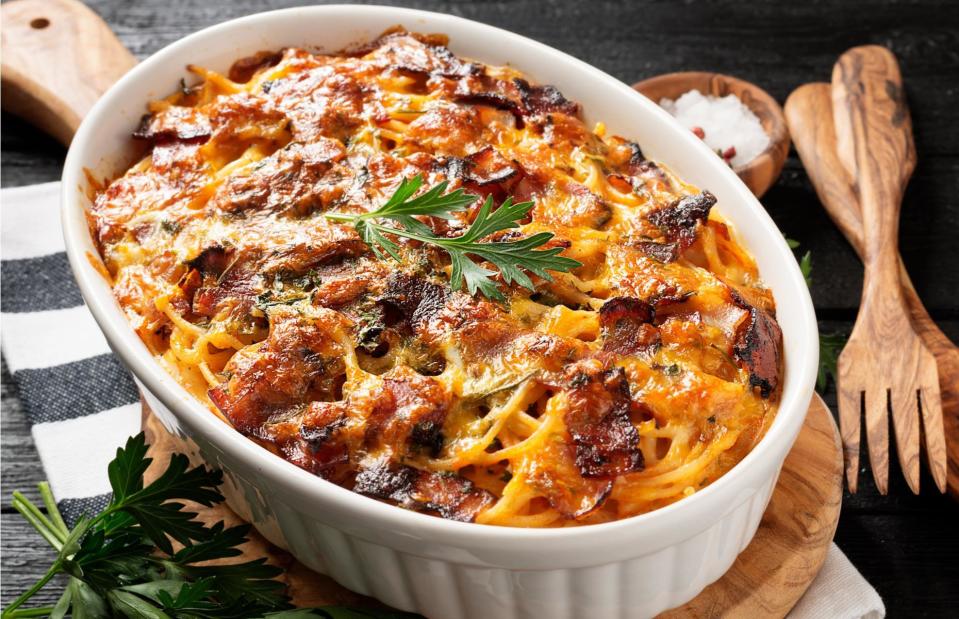
nelea33/Shutterstock
A money-saving recipe in the 1950s was spaghetti casserole. It consisted of spaghetti, tomato sauce or tomato soup, whatever leftover vegetables and meat you could find, and grated cheese. It was big enough to feed the family, filling and easy-to-freeze.
1960s: beef bourguignon
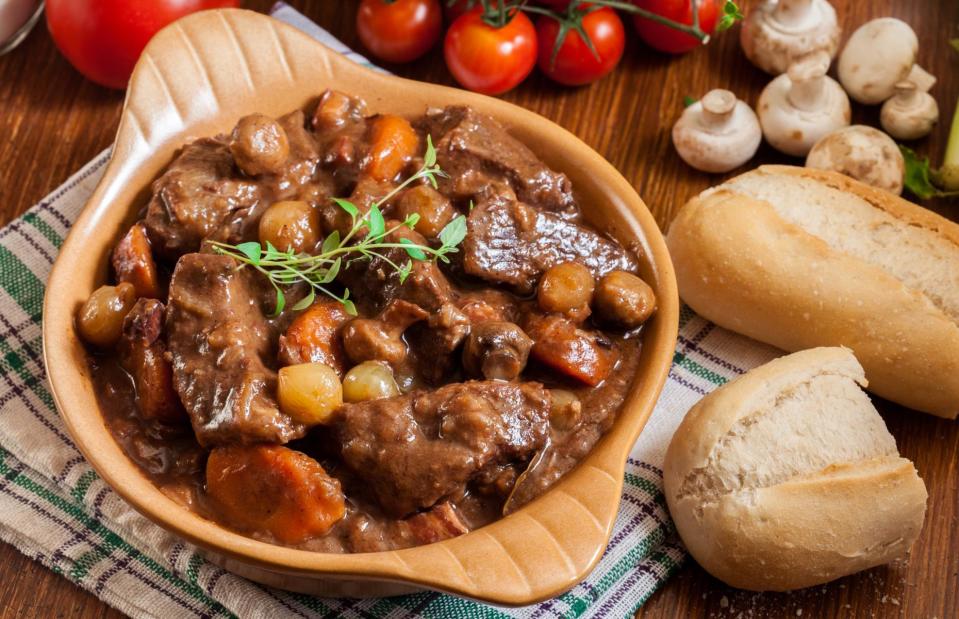
Slawomir Fajer/Shutterstock
When Mastering the Art of French Cooking was published in 1961, everyone wanted to cook French cuisine like Julia Child. Beef bourguignon was her signature dish: beef cooked in red wine with carrots, mushrooms, onions, herbs and pancetta. She described it as “one of the most delicious beef dishes concocted by man”. Another reason home cooks loved it is they could prepare it in advance before dinner party guests arrived.
1960s: crown jewel dessert

Jello/Facebook
In the 1960s you couldn’t go to a barbecue or birthday without seeing this jelly dessert on the table. Made with orange, cherry and lime jelly cubes set in a whipped cream combined with lemon gelatine. There were slightly different variations on it: some had a Graham Cracker crust while others were set in moulds. It was also good for busy cooks as the gelatine cubes can be made ahead of time.
1960s: tunnel of fudge cake
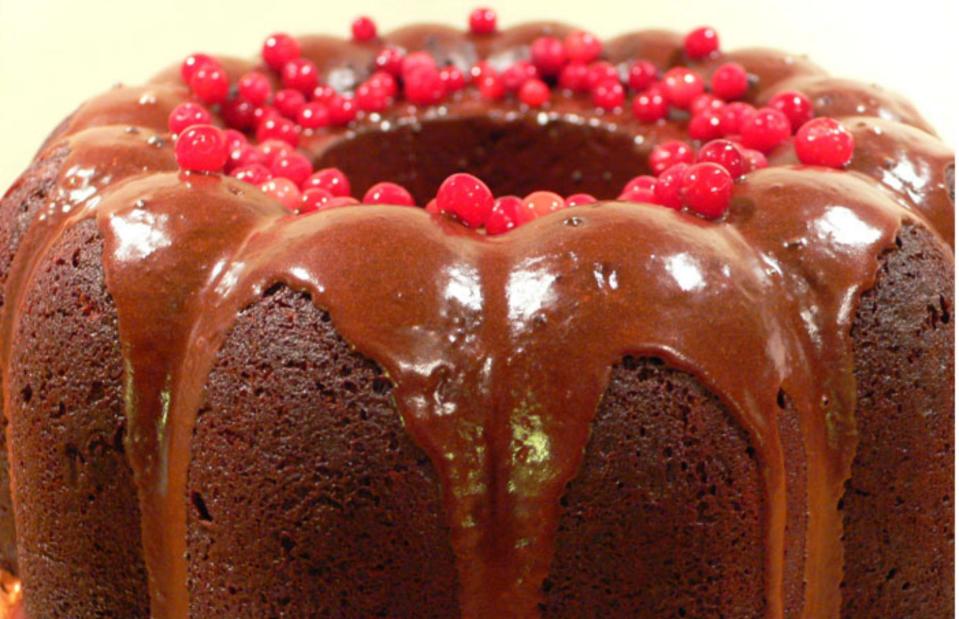
Elaine Ashton/Flickr/CC BY-ND 2.0
Tunnel of fudge is a rich chocolate and nut Bundt cake with a fudgy tunnel running through the centre. It was introduced in 1966 when it won second prize at the Pillsbury Bake-Off Contest in San Francisco. Despite losing to Golden Gate Snack Bread, it became Pillsbury’s most-requested recipe and single-handedly brought Bundt cakes into fashion.
1970s: quiche lorraine
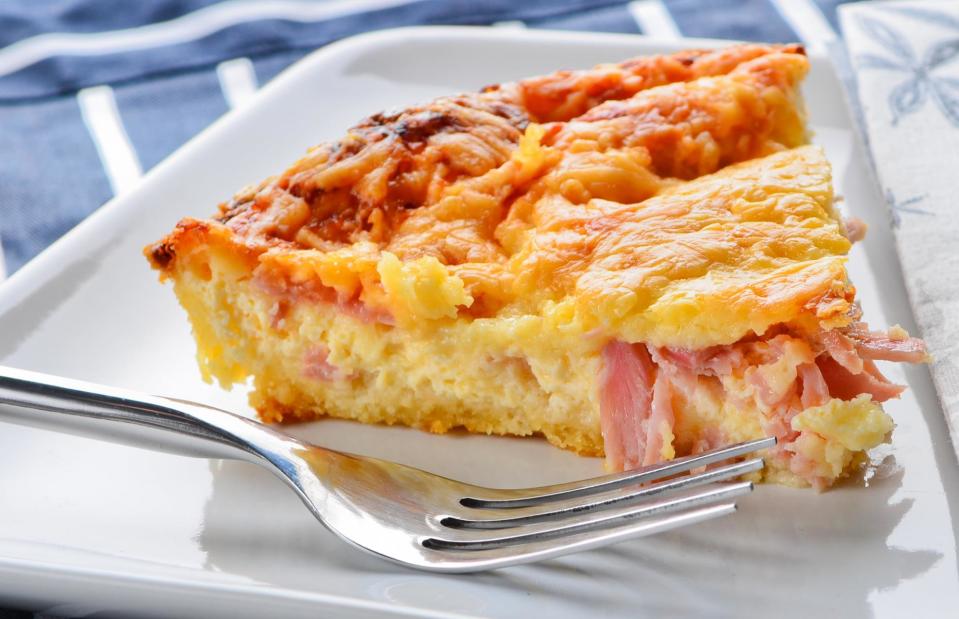
SGM/Shutterstock
The disco decade brought many great things, roller skates, ABBA and quiche lorraine. While French food was fading out, this was one dish people had not become sick of. Great eaten hot or cold, a crumbly pastry base is topped with bacon, Swiss cheese and eggs. Of course, if you make it today you can dial up the healthiness by adding cooked vegetables.
1970s: watergate salad
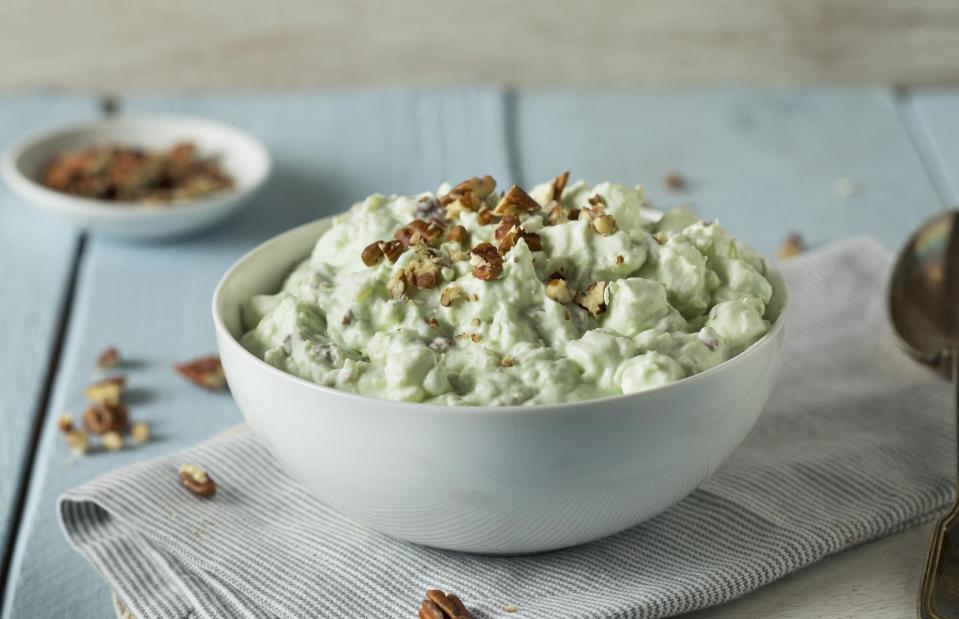
Brent Hofacker/Shutterstock
One dish from this era we’d rather forget is watergate salad. Ambrosia’s green cousin, it consists of tinned pineapple, mini marshmallows, whipped cream, chopped nuts and Kraft pistachio instant pudding mix. Some people say it was named after the Watergate Hotel, while others say it was the Watergate scandal.
1970s: carrot cake
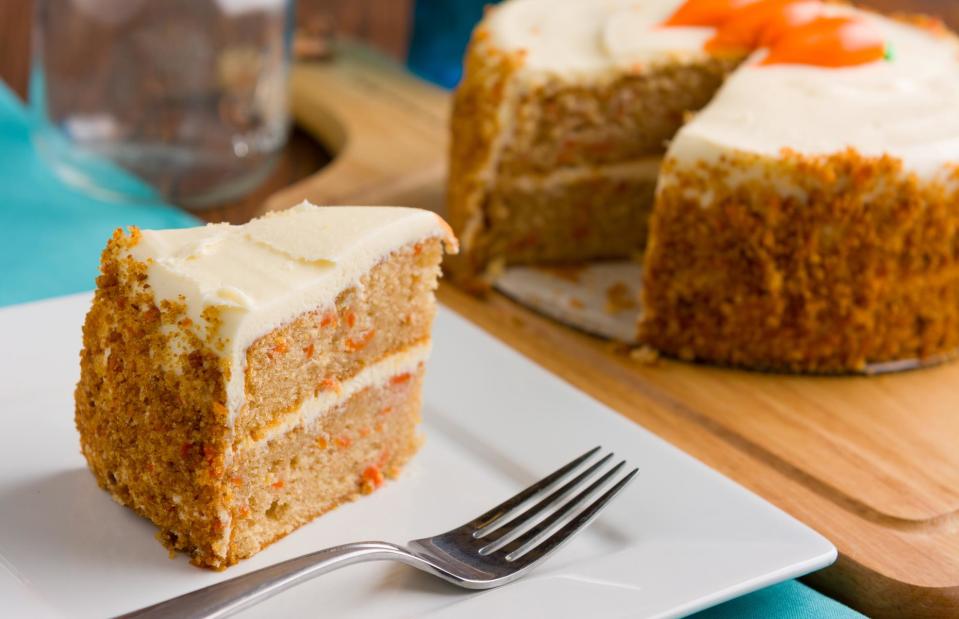
Scruggelgreen/Shutterstock
In the 1970s people were able to convince themselves carrot cake was a healthy dessert because it contains vegetables. But in truth it’s a sugary bake with grated carrots, raisins, cinnamon, oil and sugar. To top it off it’s usually coated in sweet cream cheese frosting. Sadly, we know better today.
1980s: sloppy joes
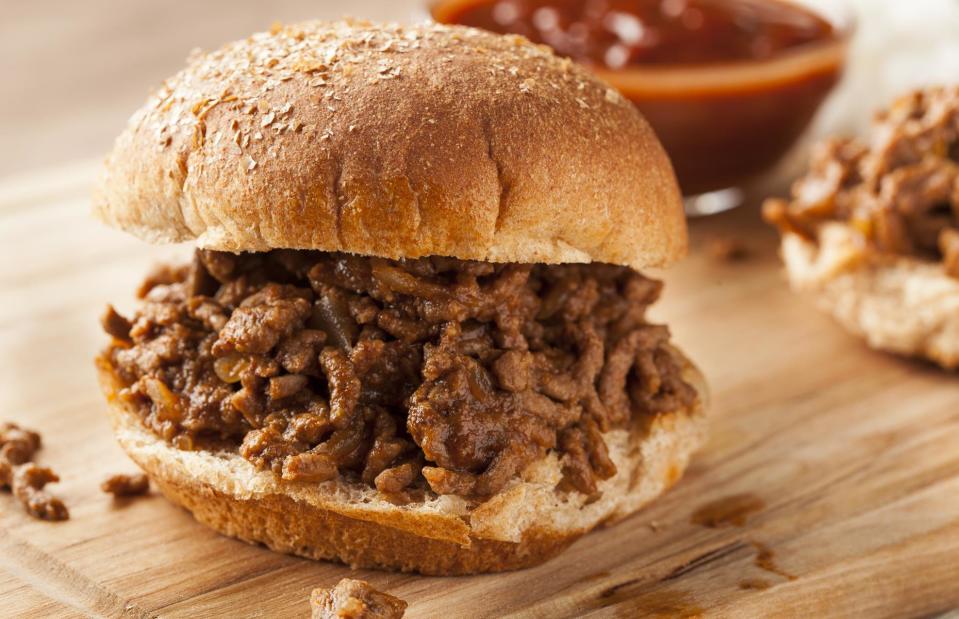
Brent Hofacker/Shutterstock
The go-to comfort food in this decade was a sloppy joe sandwich. Messy and meaty, a soft bun is filled with beef mince cooked in tomato sauce with onions, veggies, Worcestershire sauce, ketchup or spices, and topped with cheese. It also makes a quick weeknight supper.
1980s: tri-colour pasta salad
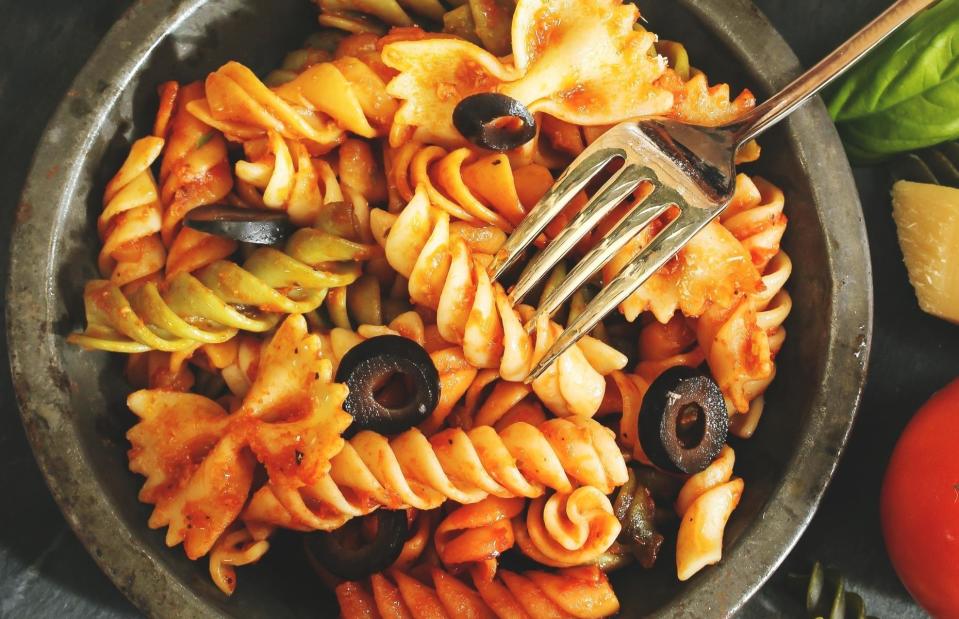
vm2002/Shutterstock
If one dish shouts 1980s, it’s pasta salad with green (spinach), red (tomato) and yellow (normal) spiral noodles. It was found at potlucks, buffets and also on the average dinner table. Tasty bits such as mozzarella balls, chopped sun-dried tomatoes, olives and Italian dressing are added to the cooked pasta.
1980s: tiramisu
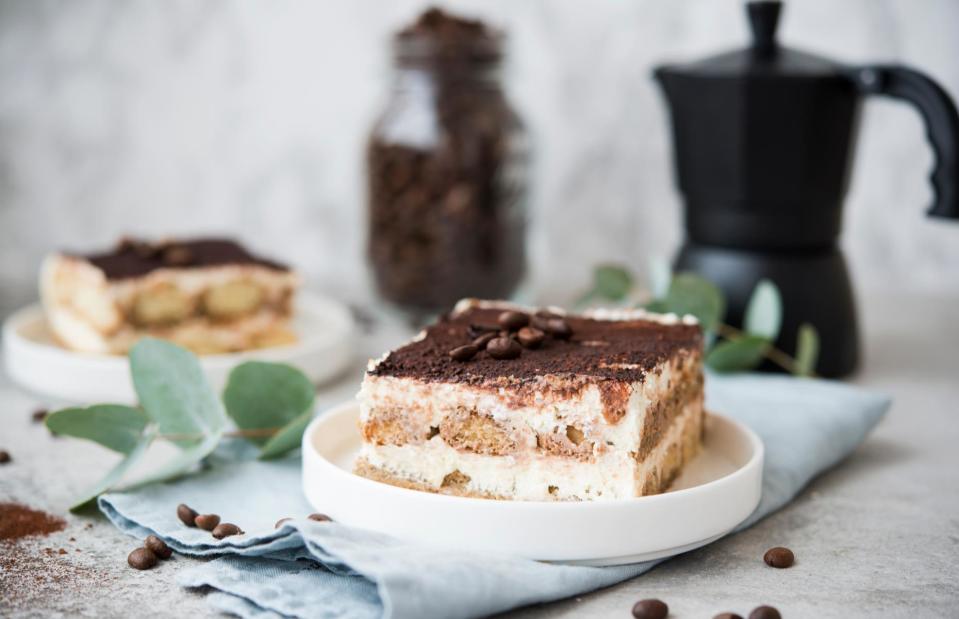
Gorenkova Evgenija/Shutterstock
Though not strictly Italian, when done right tiramisu is one of the most wonderful dishes in the world. And it was in 1980s New York that it was introduced to the world. Light as air yet seriously decadent, mousse made with mascarpone, sponge, espresso and booze – how could that not catch on?
1990s: fajitas
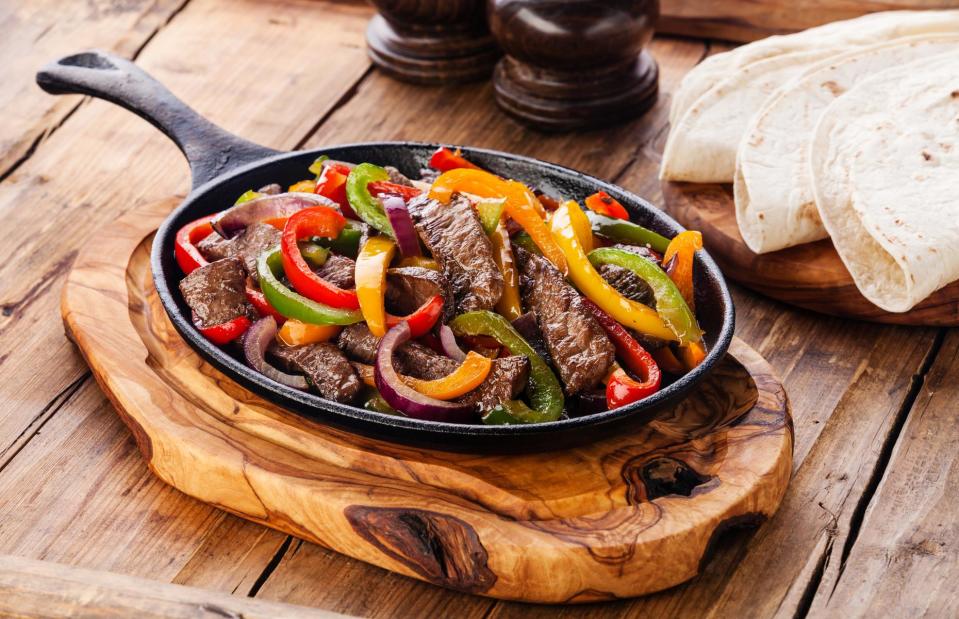
Lisovskaya Natalia/Shutterstock
It was at this time the Tex-Mex classic fajitas reached their peak. Strips of beef or chicken cooked with peppers and onions and arranged in soft tortillas with salsa, Cheddar, sour cream and guacamole. It was a favourite to order at restaurants as the dish was brought out on a sizzling hot iron skillet by the waiter.
1990s: molten chocolate cake
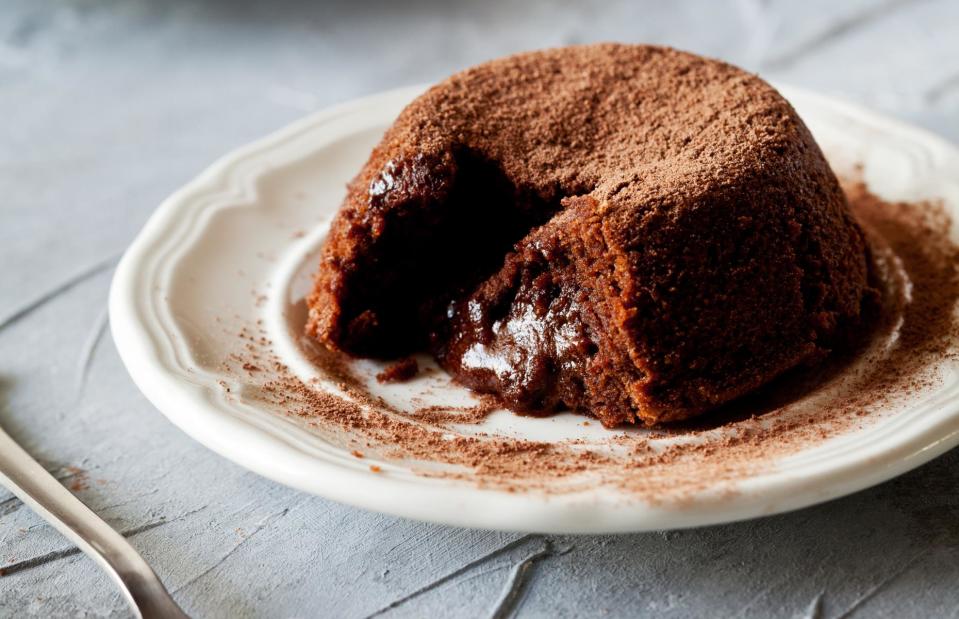
mpessaris/Shutterstock
If Instagram existed in the 1990s, molten chocolate cake would have been the viral dessert of the day. First mentioned by name in print in the 1990s, individual chocolate cakes with molten centres started being served in fine-dining restaurants the decade before. The dish caught on fast and was a favourite in households across the country.
2000s: cupcakes

istetiana/Shutterstock
These little delights were absolutely everywhere in the 2000s, miniature ones especially. The craze is said to have taken off following a Sex and the City episode. However, its defining moments were artisan cupcake shops appearing on every street and home cooks staying up past midnight to bake and ice batches to take to parties. Or was that just us?
2000s: sliders
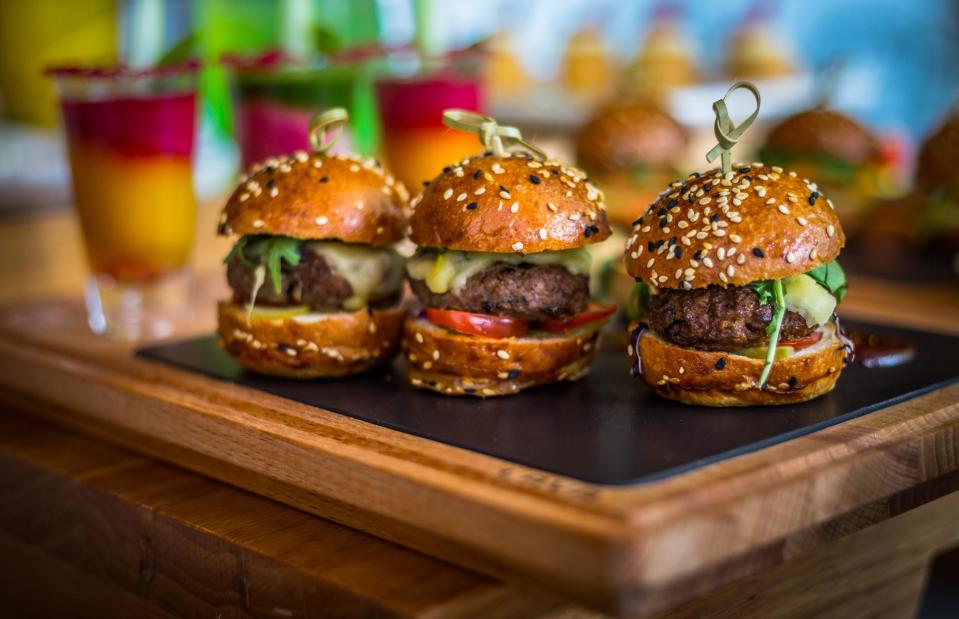
Ferveez Mohideen/Shutterstock
Along with cupcakes, sliders were everywhere last decade. Though they’ve existed at White Castle since 1921, in the 2000s they became more ubiquitous and gourmet. Little buns can be filled with anything from meatballs and tomato sauce to beef rib and Gruyère, see these recipes for inspiration.
2010s: ramen
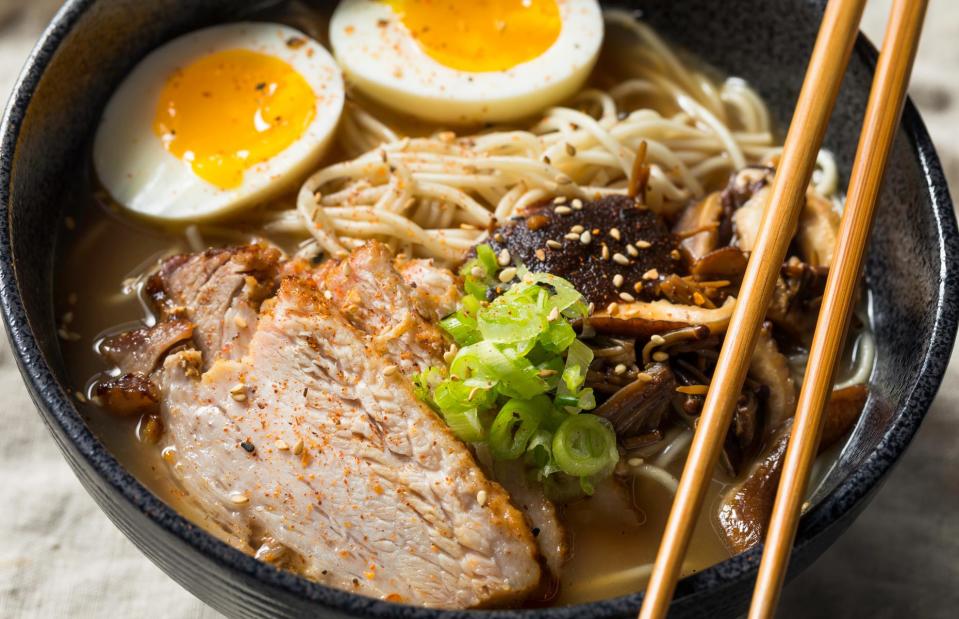
Brent Hofacker/Shutterstock
Since this Japanese dish took off in the 2000s, people have started attempting to make it at home. And not just the instant noodle variety popular with students, but restaurant quality ramen made with broth, seasoning, noodles and toppings such as pork belly, soft boiled eggs, pickled bamboo and dried seaweed.
2010s: mac 'n' cheese
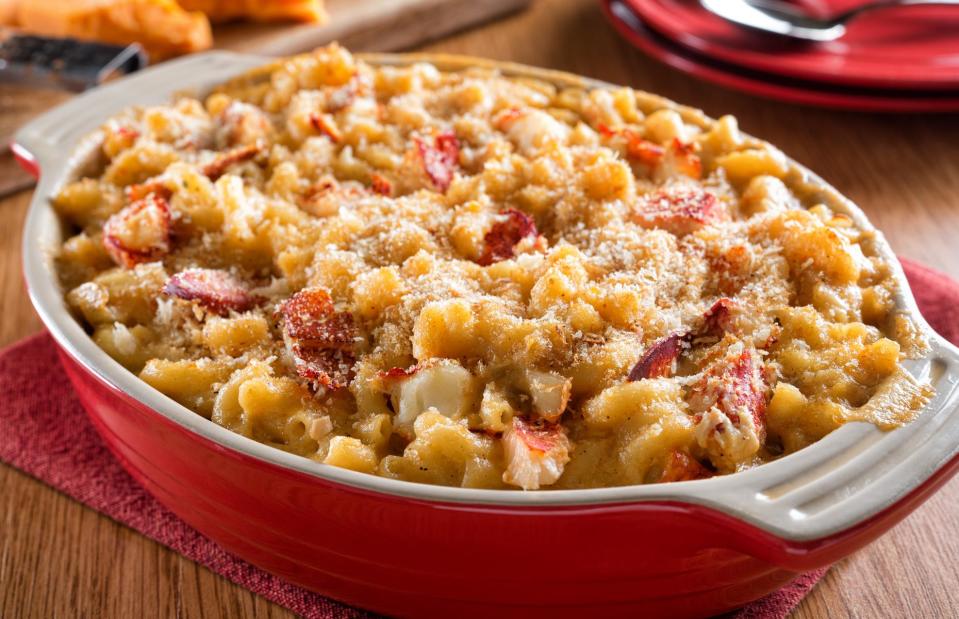
Foodio/Shutterstock
This decade has seen gourmet mac 'n' cheese arrive on restaurant menus nationwide. Usually served in an individual casserole dish or skillet, it may include luxury toppings such as Gruyère and bacon or truffle mushroom and lobster tail. Many celebrity chefs have also published their own recipes, such as this crayfish and seafood creation from British TV personalities The Hairy Bikers.
2010s: avocado on toast

Thaninee Chuensomchit/Shutterstock
The most ubiquitous but controversial dish around today is without a doubt avocado on toast. Posted about online by bloggers, sold in high end restaurants and eaten in private at home. It’s simultaneously hated and loved. How did mashing a vegetable on toast become such a big deal?
These are the retro ingredients we wish would make a comeback


